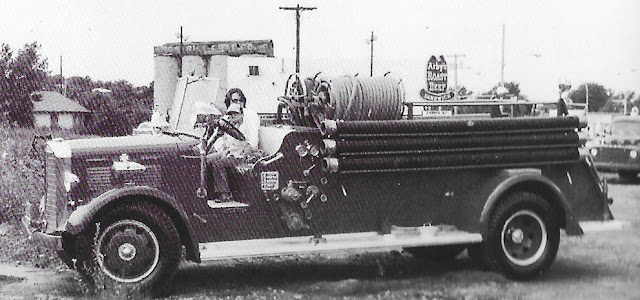Vandewater & Co. (1909)
Iselin, New Jersey
Vandewater & Co. Inc. (1909-1910)
Correja Automobile Co. (1910-1911)
Elizabeth, New Jersey
Correja Motor Car Co. (1911-1914)
New York, New York
 |
This is a Correja radiator script (c1911) jtc
Size: 125mm wide 70mm high |
F. C. and Edwin Vandewater of Vanderwater & Company were involved with the Eagle car in Rahway, New Jersey before moving to Iselin to produce the Correja.
Production of the Correja began in August 1908 for the 1909 model year but the company was reorganized as Vandewater & Co. Ltd., and moved to Elizabeth, New Jersey in December 1909. The company was reorganized again in July 1910 as the Correja Automobile Company with J. Correja as one of the Directors.
The Correja was a well-built automobile, which began in 1909 as a 40 hp four-cylinder model offered as a five-passenger tourer or a two/three-passenger runabout. There was range of 30 hp and 50 hp models in 1910 but, for 1911, production concentrated on a single 35 hp two-seat Speed Runabout model, probably to take advantage of the good publicity gained through a series of race successes, particularly in hill climb events. The company used the slogan "Takes Every Hill and Always Will". However, the company may have been in the need of finance, because it was reorganized again in 1911 as the Correja Motor Car Company and its headquarters were moved to New York City. There is some evidence to suggest that there was a return to Vandewater & Co. Ltd, in 1912.
For 1912, production returned to a wide range of models, including six-cylinder models. All Correjas were six-cylinder models after 1912. However, sales had started to fall after 1911 and thereafter more of the company's income came from parts sales and repair work. The company was bankrupt by February 1914.
Emblems
The first Correja cars displayed the "Correja" name on a brass script within a diamond shaped frame mounted on the front of the radiator core, see example shown below in an original period photo:
 |
| Correja race car showing radiator core script (c1909) dpl |
 |
| Close up showing radiator script |
The following rather poor quality original photo appears to show a diamond shaped "Correja" emblem without a frame mounted on the radiator core:
 |
| Correja car with radiator core emblem (c1909) hcif |
These "Correja" radiator core emblems are based on the first Correja trademark, which appears on Correja advertisements up to 1911, see example shown below. Original "Correja" radiator scripts with this design are extremely rare.
.jpg) |
| Correja ad showing trademark (1911) tcm |
The following Correja advertising billboard shows a Correja car with a very different radiator script showing the name "Correja Car":
 |
| Correja advertising billboard (c1910-1911) dpl |
 |
| Close up showing "Correja Car" radiator script |
The Correja radiator script shown above is clearly an artist's illustration but the "Correja Car" radiator script did exist, see original period photo shown below. An original "Correja Car" radiator script would be extremely rare.
 |
| "Correja Car" radiator script (c1910) dpl |
Several Correja advertisements show Correja cars without a radiator script, see example shown below. This suggests that the "Correja" radiator script may have been an optional attachment.
 |
| Correja advertisement showing no radiator script (1911) ebay |
A new "Correja" trademark appeared on Correja advertisements later in 1911, see below:
 |
| Correja advertisement showing new trademark (1911) ebay |
 |
| Correja Trademark (c1911) |
This new Correja trademark was used as the design for the painted brass "Correja" radiator emblem shown above at the top of this post and again below. Original Correja radiator emblems with this design are very rare.
 |
This is a Correja radiator script (c1911) jtc
Size: 125mm wide 70mm high |
Some Correja cars carried an emblem mounted on the front of the radiator tank top from later in 1911, see original photo of a Correja car taking part in the Guttenberg Races shown below:
 |
| Correja car with rad emblem at the Guttenberg Races (1911) dpl |
 |
| Close up of Correja radiator showing the emblem (1911) |
The Correja radiator emblem shown above appears to follow the design of the first Correja trademark but the detail in the design cannot be seen from this photo. An original Correja radiator emblem would be extremely rare.
If you have any better details or photos of this Correja radiator emblem or the Correja radiator scripts shown earlier, please let me know, in order to update this post.









.jpg)




































